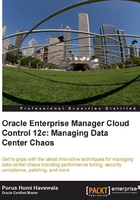
Chapter 1. Chaos at Data Centers
Studies show that many corporations world wide expect their IT footprint to grow in the coming years. They expect more servers, more databases, more data, and more of everything.
They require more floor space in their data centers, and correspondingly a greater power footprint. Have you heard of a data center where no more servers can be added as the power supply has reached its limit, or the uninterruptible power supply (UPS) can no longer cope? This story is not new, it happened a few years ago.
The growth seems to be endless—and this is fuelled by today's information age, where larger and larger volumes of data need to be stored and distributed to satisfy an ever-growing demand. More applications are using those databases, on more and more application servers.
So, for an IT manager, this will mean more of everything in his/her data centre. There may be different hardware platforms, different operating systems, for example, Solaris, Linux, IBM AIX, or Microsoft Windows, and in each such case there may be different versions such as the different flavors of Linux supplied by different vendors, including Oracle Enterprise Linux, Red Hat, SUSE Linux, and so on.
In the database arena, if a company has no policy of standardization for one particular database vendor, there may be different databases, such as Oracle, IBM DB2, or Microsoft SQL Server, in use by different projects.
Even if the databases belong to only one vendor, for example Oracle, the databases may be of different versions, such as Oracle Database 9i, 10g, or 11g. In the real world, it is very difficult to standardize on one version, as all applications may not be certified to use on that one database version. You may have some application vendors that say they are certified on Oracle Database 10.2.0.3 and not 10.2.0.5, and some that say they only use a particular version of Oracle Database 11g Release 1 and no other version.
So multiple database versions need to be installed separately, managed, patched as required, and upgraded when required. Also, development as well as test, staging, and production environments need to be provisioned (created) for each such database version. This level of complexity is the ground reality in today's data centers.